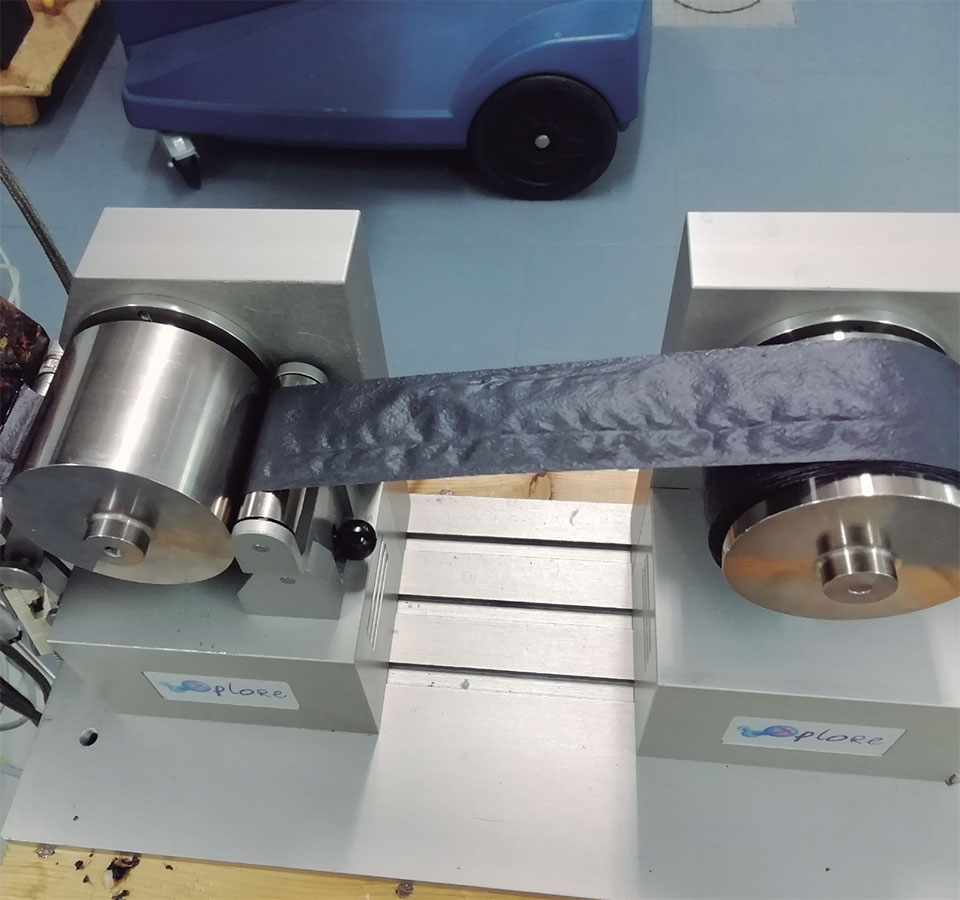ECOTAPE
RECYCLED POLYPROPYLENE COMPONENTS FOR TRANSPORT VEHICLES
IN GENERAL, THE PRIORITY FOR THE NEW AUTOMOTIVE AND TRANSPORT COMPONENTS sector is to reduce the overall weight of the vehicle to reduce CO2 emissions, improve power and range of electric vehicles, and also to comply with recycling regulations. Continuous Fibre Reinforced ThermopIastic (CFRT), are innovative plastic composites with high technical characteristics, low density, good weatherability and good recyclability. The fact that they are used to replace metaI and/or technical plastics represents a major technology and market opportunity. It is currently used at a very early stage because manufacturing and processing techniques are expensive, in addition to a lack of product range. Obviously, the possibility of obtaining thermoplastic tape based on thermoplastic matrices from recycled sources does not exist at all.
CIE Automotive is a processing specialist and masters all available technologies available for the manufacture of automotive components and sub-assemblies. GAIKER Technology Centre and RECYCLAIR, the waste management company, also collaborated with ECOTAPE.

DRIVING FACTOR


 OBJECTIVES
OBJECTIVES
- Create a new generation of composites to be used in the manufacture of components for land transport vehicles with a structural function; and make the use of these composites more affordable through design, innovation and optimisation of their manufacturing processes.
- Introduce a range of more competitive parts in the transport sector for which there is currently no competition in our environment, maintaining the technical performance required for the current part, and with the possibility of diversifying to other sectors in a lean way.
- Re-introduce polypropylene (PP) plastic fractions that are currently used for energy recovery when mixed with other materials, into the economic cycle as secondary raw materials.
- Create a thermoplastic tape based on recycled PP: setting up the work procedure, selecting and classifying the source of PP to guarantee the homogeneity of the resulting product; and adapt the thermoplastic matrix specifications to the particular needs of ECOTAPE.
 RESULTS
RESULTS
- Complete production cycle of a part used in the roof unit structure - from concept and creation of the ad-hoc composite sheet to manufacturing the demonstrator or prototype, including its design, transformation process, manufacturing the necessary tooling and product characterisation.
- Estimated potential savings of 2,700 tonnes of CO2 equivalent per year.
 CONCLUSIONS
CONCLUSIONS
- ECOTAPE’s main technical limitation is availability of homogeneous and purified recycled PP fractions, as well as potential lack of interaction between a recycled plastic matrix and the reinforcement material itself.
- ECOTAPE must continue developing with several lines of action: optimisation of processing techniques to obtain a competitive tape; improving mechanical performance; reducing the thickness of the designed components; and further research into purifying the recycled PP stream to minimise the presence of foreign matter.
- Although the environmental impact has been positive, at the moment, the need for a technically improved tape to be more competitive prevents escalation to an industrial processing line for thermoplastic tapes based on recycled matrices.
ENVIRONMENTAL
TECHNICAL
ECONOMIC
COMMERCIAL
ON THE MARKET



